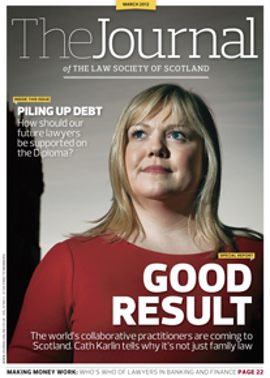Here we go again...

On 9 February 2012 the Second Division issued its decision in the appeal and cross-appeal against the Land Court’s order of 2 June 2010 in Morrison-Low v Paterson’s Executors: [2012] CSIH 10.
The Inner House overruled the Land Court on the central issues, the treatment of single farm payment (“SFP”) and the methodology to be used in applying s 13 of the Agricultural Holdings (Scotland) Act 1991 (as amended in 2003), on setting the rent payable for Moonzie Farm, Fife, from 4 December 2008.
Single farm payment
The court ruled that SFP should be taken into account because:
- although producer-supporting, it is a subsidy, just as much as the production-based subsidies it replaced; and
- although the entitlement to SFP is brought to the farm by the tenant and not directly attached to land, it is only by the occupation of land that it is unlocked.
Fundamental flaw
On methodology, the Land Court had erred, fundamentally, by employing a budgetary method where the rent was seen as a sharing of farm income between the parties, in the context of the potential earning capacity of the farm. The correct approach was to arrive at a hypothetical open market rent, the proper question being what influence, if any, SFP has on an open market offer of rent.
The Land Court had been wrong, therefore, to reject the sitting tenant comparables advanced by the landlord, on the ground that SFP had been taken into account.
The section 13 process
The court set out the evidence required to identify an open market rent, in order of weighting, namely:
- Lettings of comparable holdings on 1991 Act tenancies, if, as a result of the 2003 Act, such evidence existed.
- Rents of open market LDT and SLDT (which it confirmed are admissible), appropriately adjusted: the Land Court had wrongly rejected the SLDT put forward by the landlord because of uncertainty over marriage value.
- Rents of comparable holdings agreed with sitting tenants of 1991 Act tenancies, adjusted to equate with the subject holding: an assertion that the valuation is based on the expert’s knowledge and experience is insufficient.
- A farm budget, though this is the “last resort”. While profitability is a relevant consideration in framing an offer, there may be many reasons for a credible offer (on a wider view) exceeding what a budget might suggest, taking into account assumptions and variables, e.g. market trends or cereal prices.
Other points
In addition to the admissibility of LDT and SLDT, the court held (clarifying drafting points) that in assessing the open market rent of a comparable holding, the Land Court should not disregard scarcity as such, but the amount of the rent that is caused by scarcity.
In considering an open market comparable, marriage value should be valued out, but, where an open market letting of the subject holding would attract marriage value, that should be taken into account.
Two European cases relied on by the tenant were irrelevant, given the court’s rejection of the budgetary approach.
It was incorrect to assume equality of supply and demand of potential lettings, rather a reasonably balanced market.
The Second Division invited the Land Court to consider whether a rent of £30 per acre for the secure tenancy of Moonzie was plausible, given comparable evidence (which it had accepted) of sitting tenant rents at £60-£65 and the SLDT at £90.
The court allowed the appeal, recalled the Land Court’s order and returned the case to the Land Court for revision of its valuation.
Comment
The Court of Session’s opinion is welcome for clarifying the treatment of SFP and the methodology to be used in applying s 13. I doubt if it will encourage a flood of rent review cases to be referred to the Land Court (although some are sisted pending the Moonzie decision – including a further review of Moonzie itself as at 4 December 2011!), and think that the majority will be settled in time honoured fashion, by agreement.
The current quest to find a cheaper and simpler method of dispute resolution will doubtless gain momentum (commentators are already asking how the two courts concerned can reach radically different conclusions). Pressure is bound to mount for a fundamental review of s 13.
In this issue
- Capacity and undue influence
- Tolent clauses in construction contracts
- Mending the safety net
- Keeping it in the family
- Speak with impact
- The complication of tax simplification
- Reading for pleasure
- Opinion column: SIHRG
- Book reviews
- Council profile
- President's column
- The price is right?
- Learning on the slate
- A better way to talk
- Plain sailing?
- Kilbrandon in the 21st century
- Who's who in banking and finance
- Corporate speak
- Here we go again...
- Deadlines in negotiations
- Scottish Solicitors' Discipline Tribunal
- Shuffling walnuts?
- A bold step forward
- Action to safeguard vulnerable clients
- Buildmark acceptance goes online
- Law reform roundup
- Escape from disaster?
- Ask Ash
- Update branches out
- Business checklist
- Work, the deciding factor






